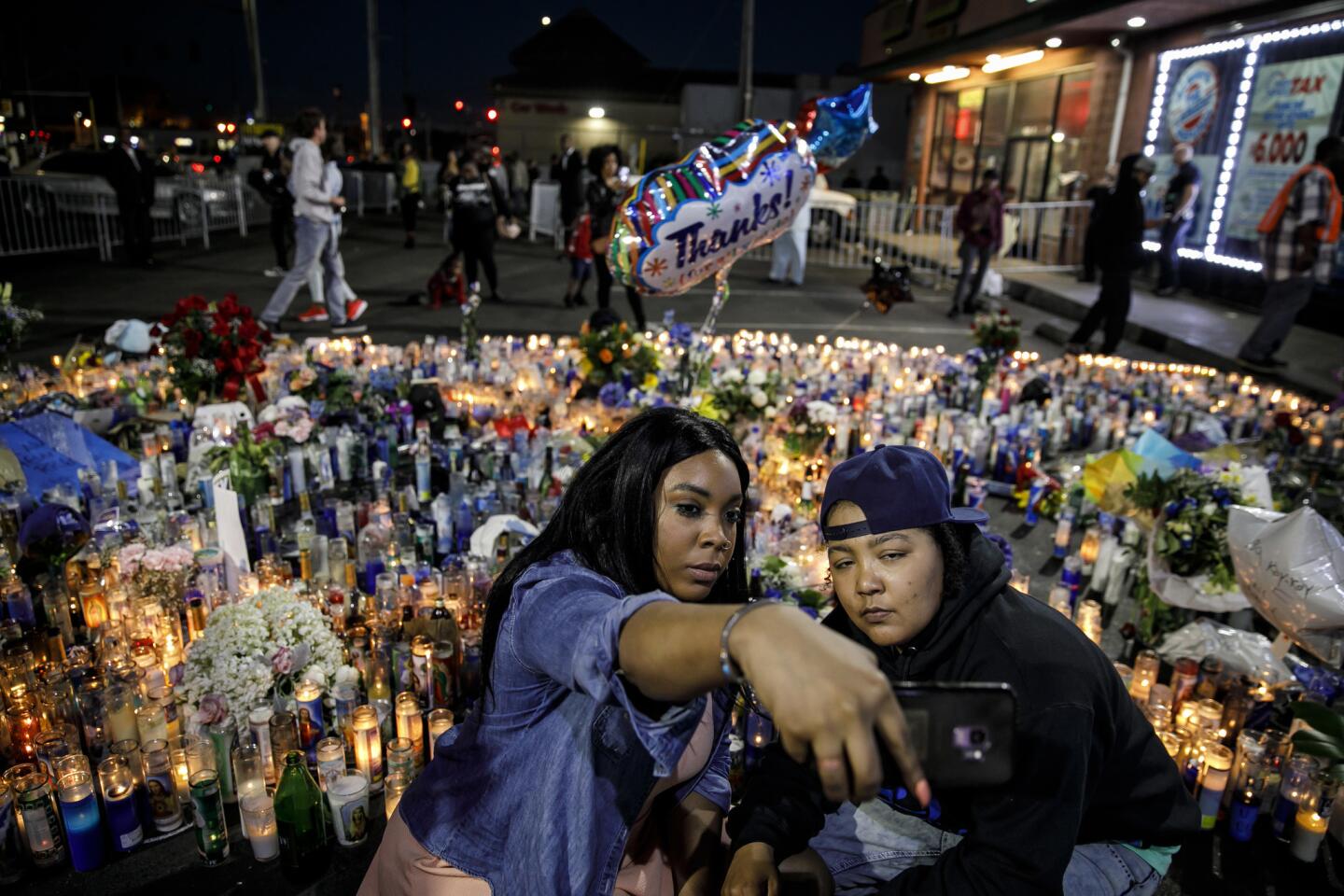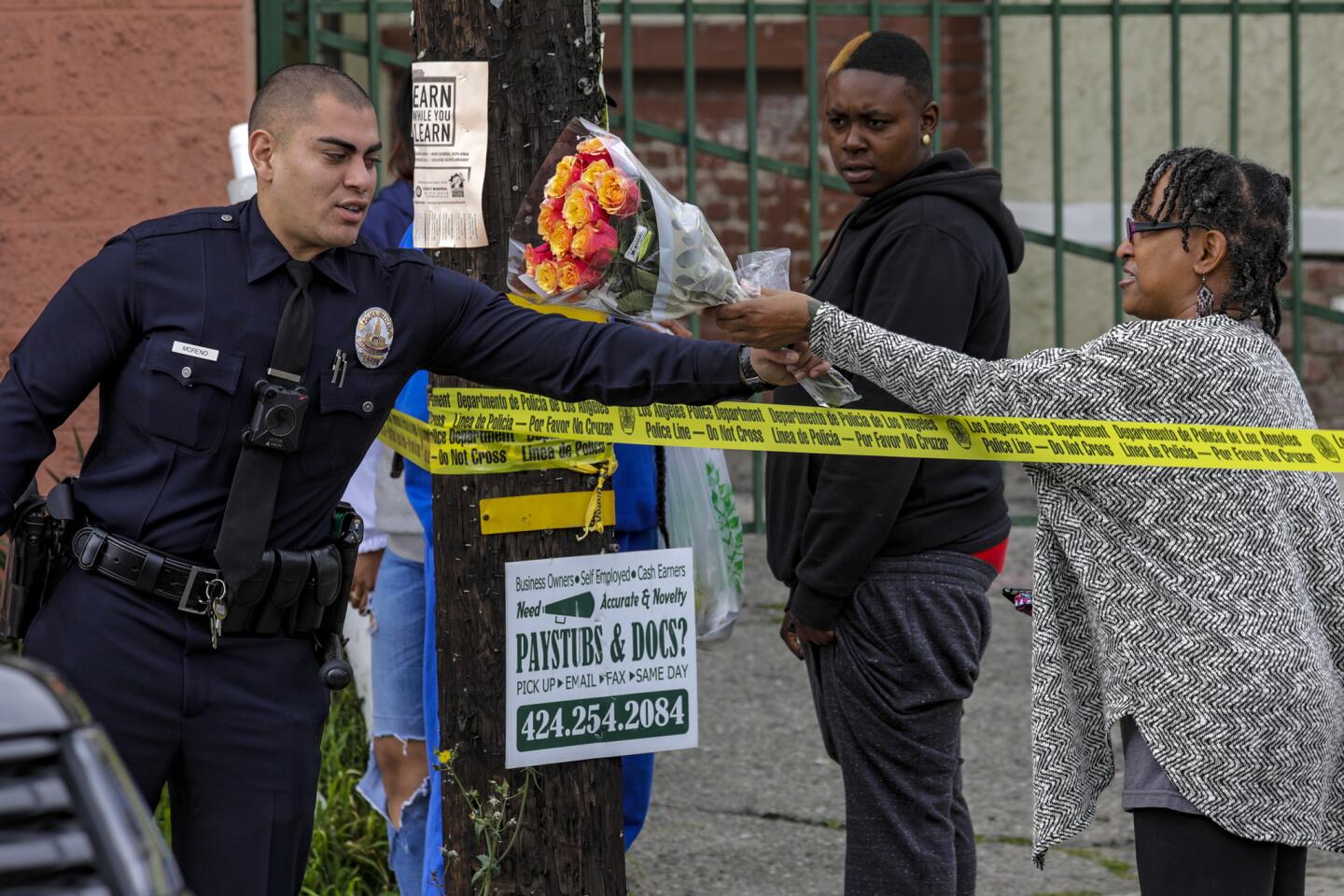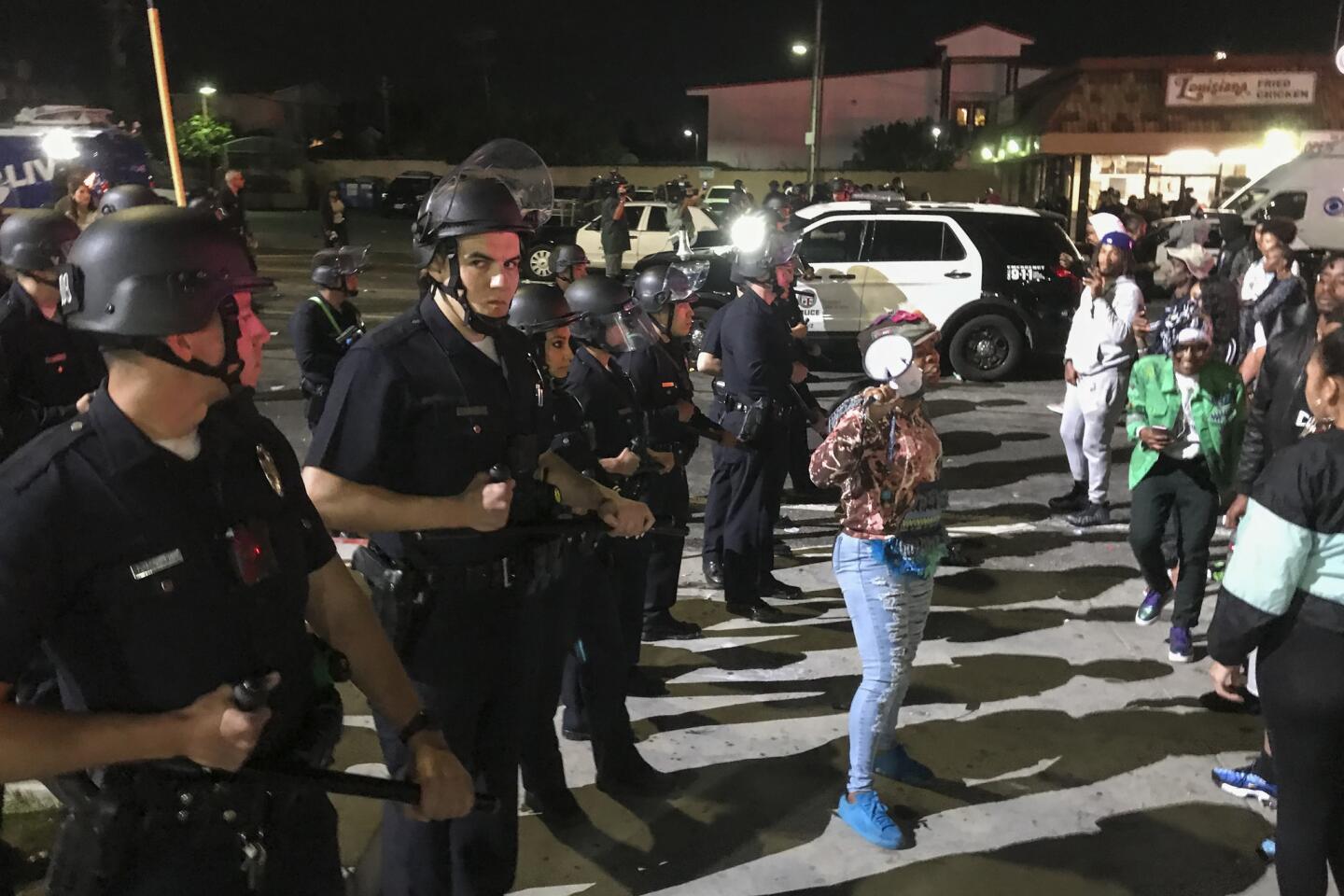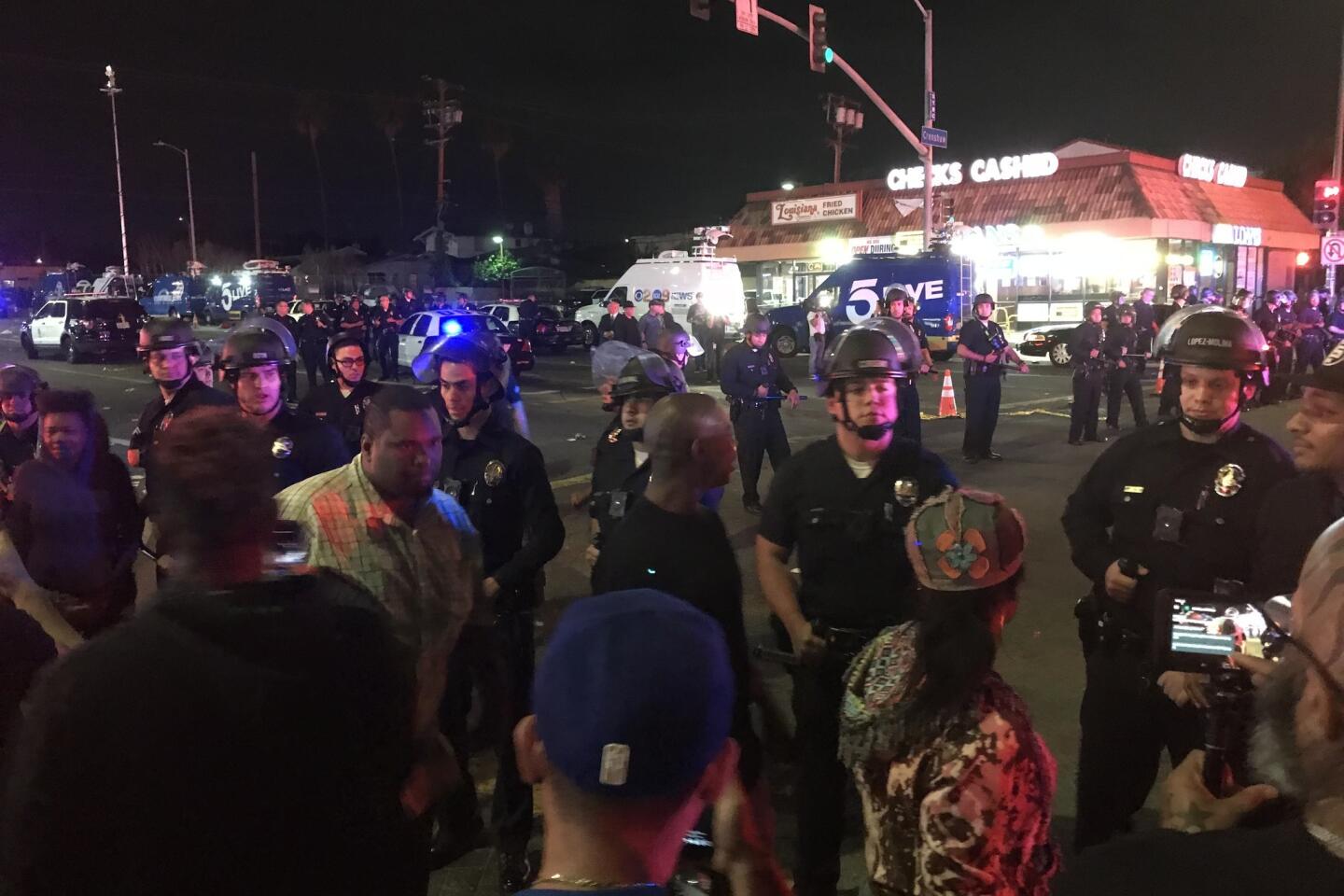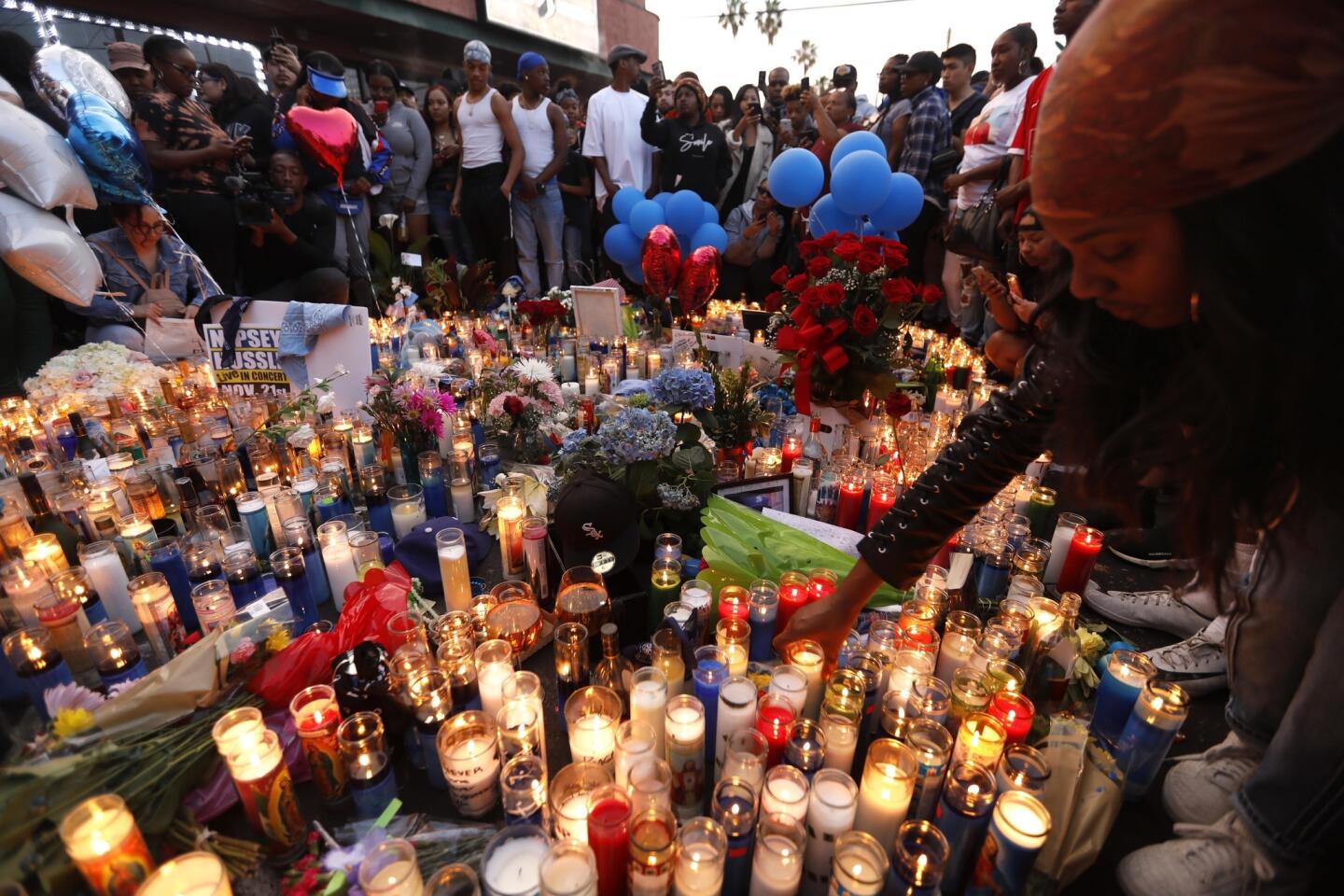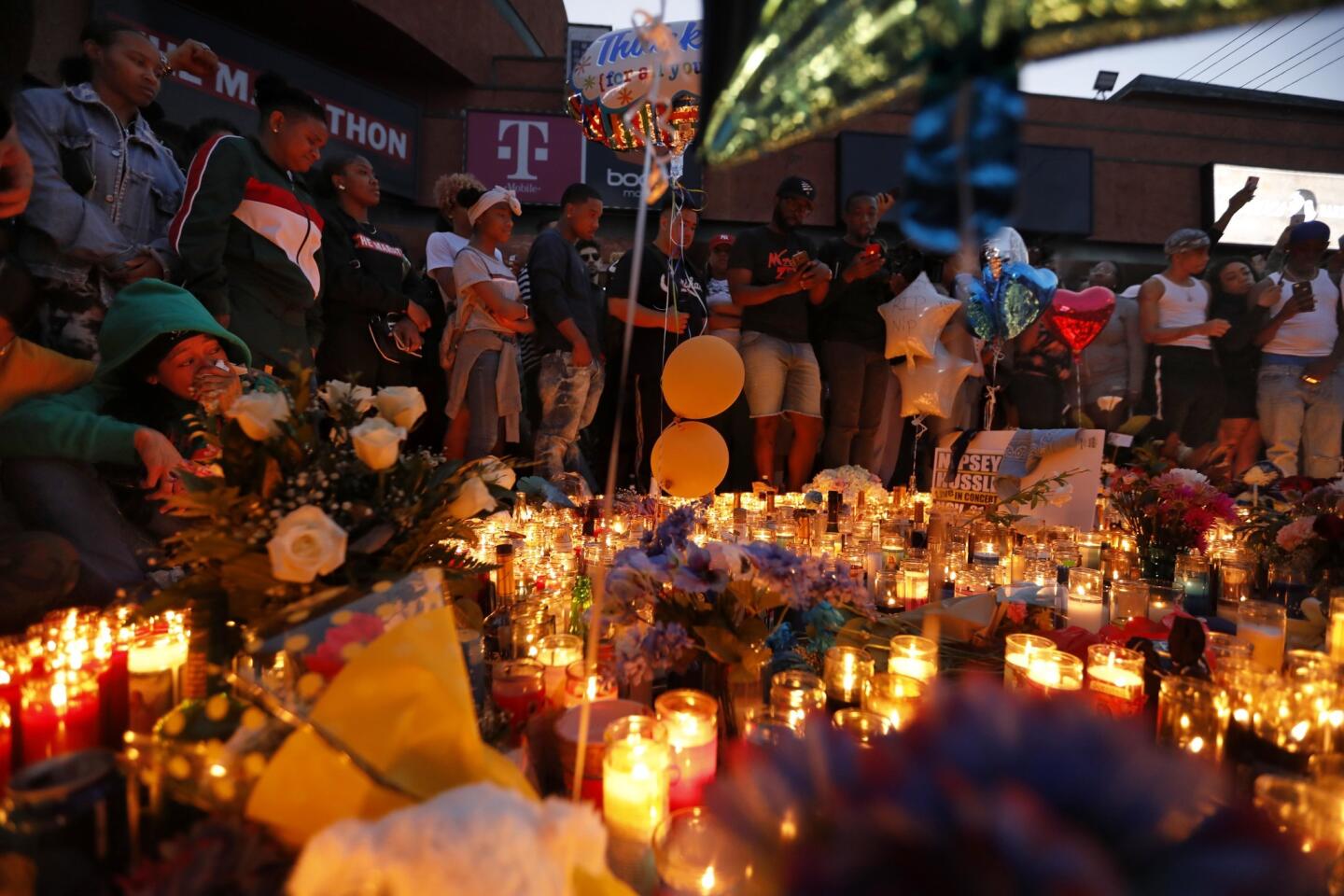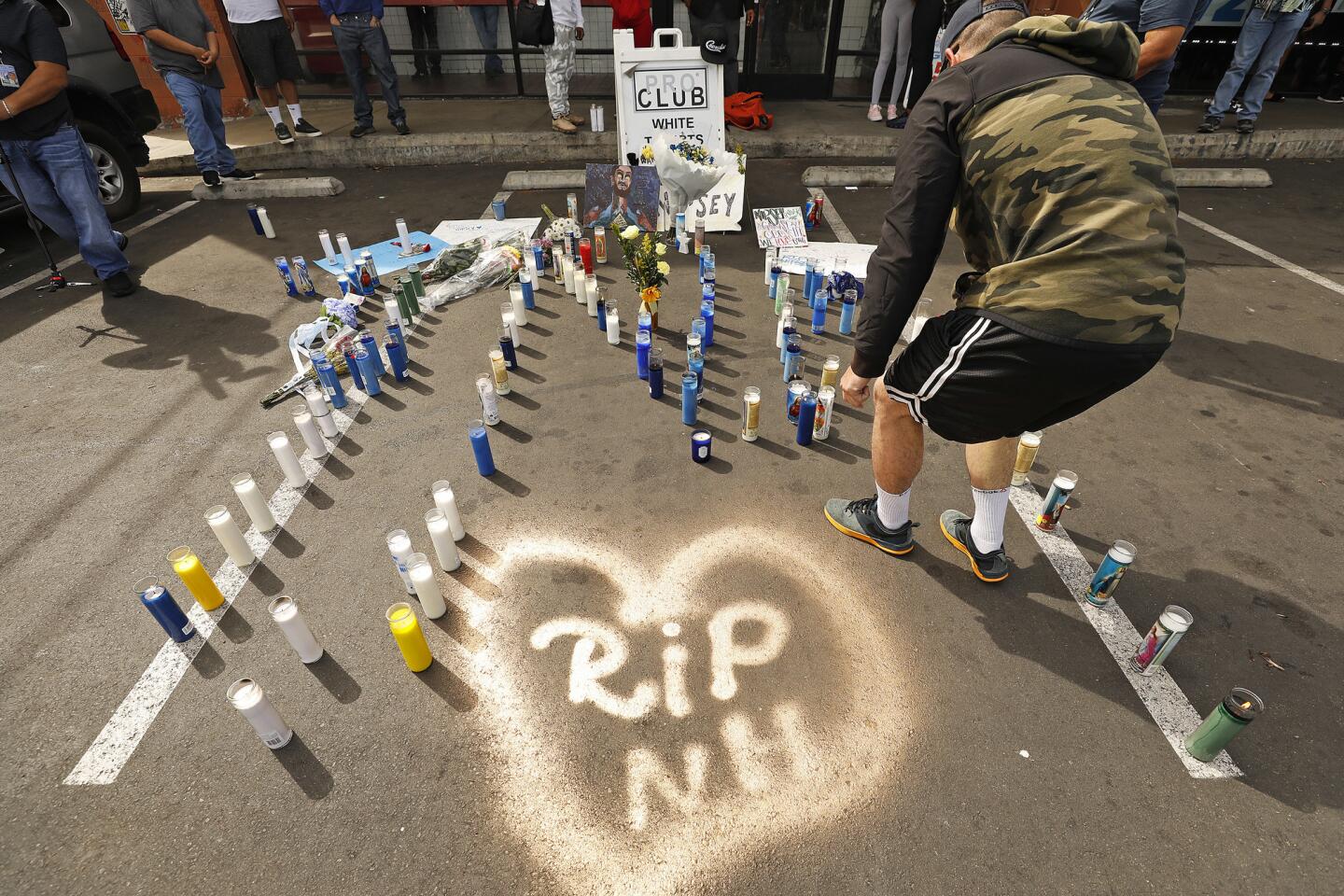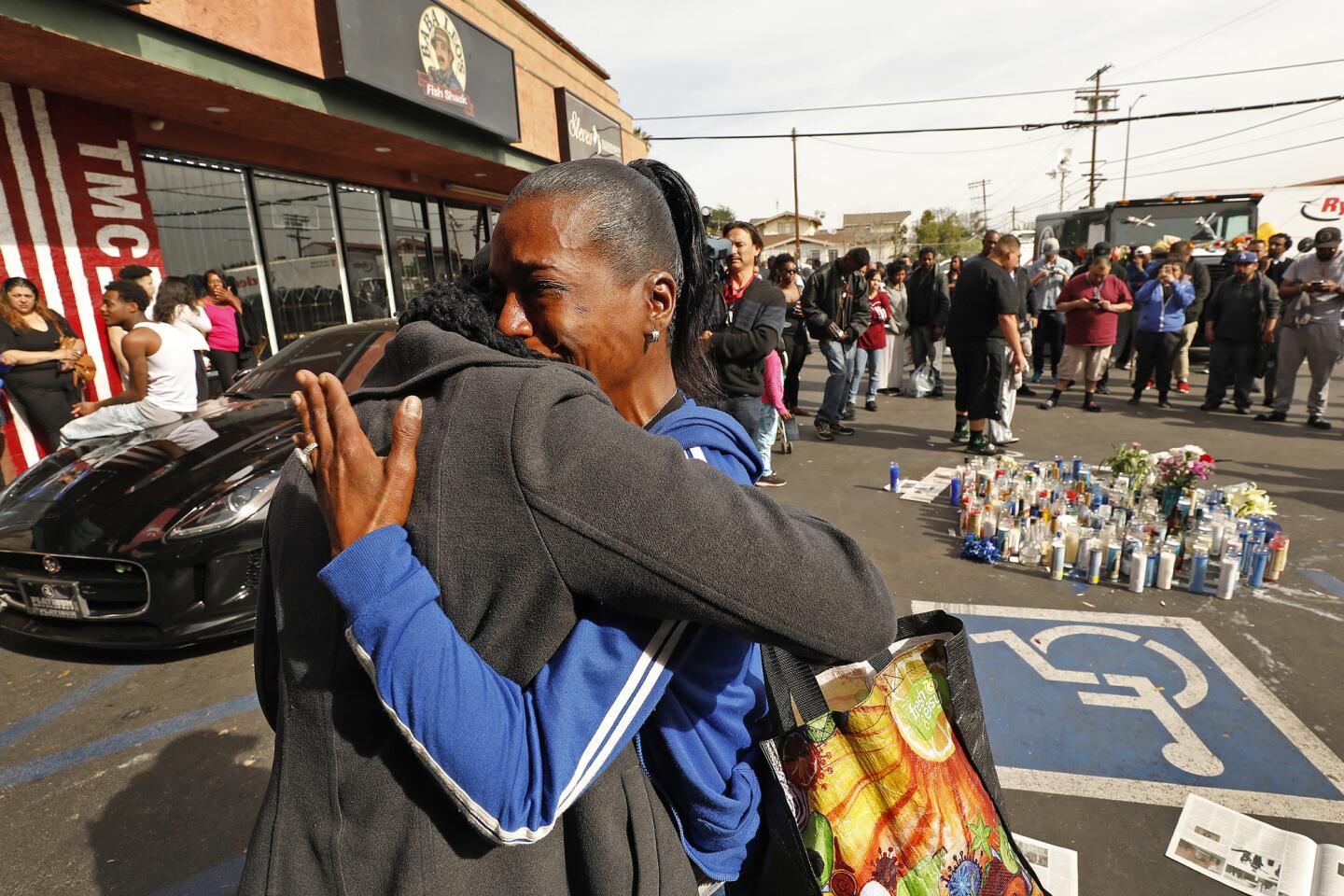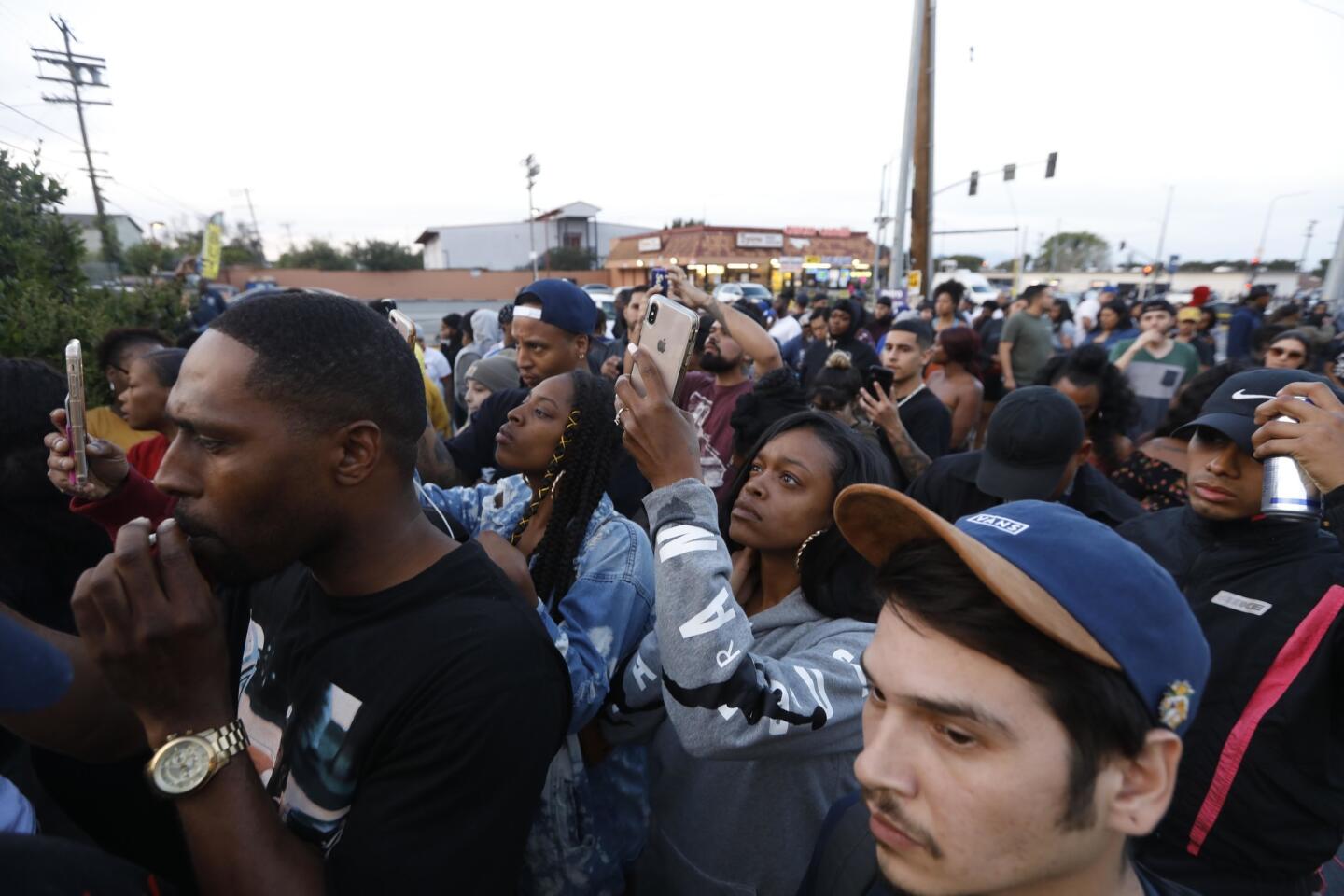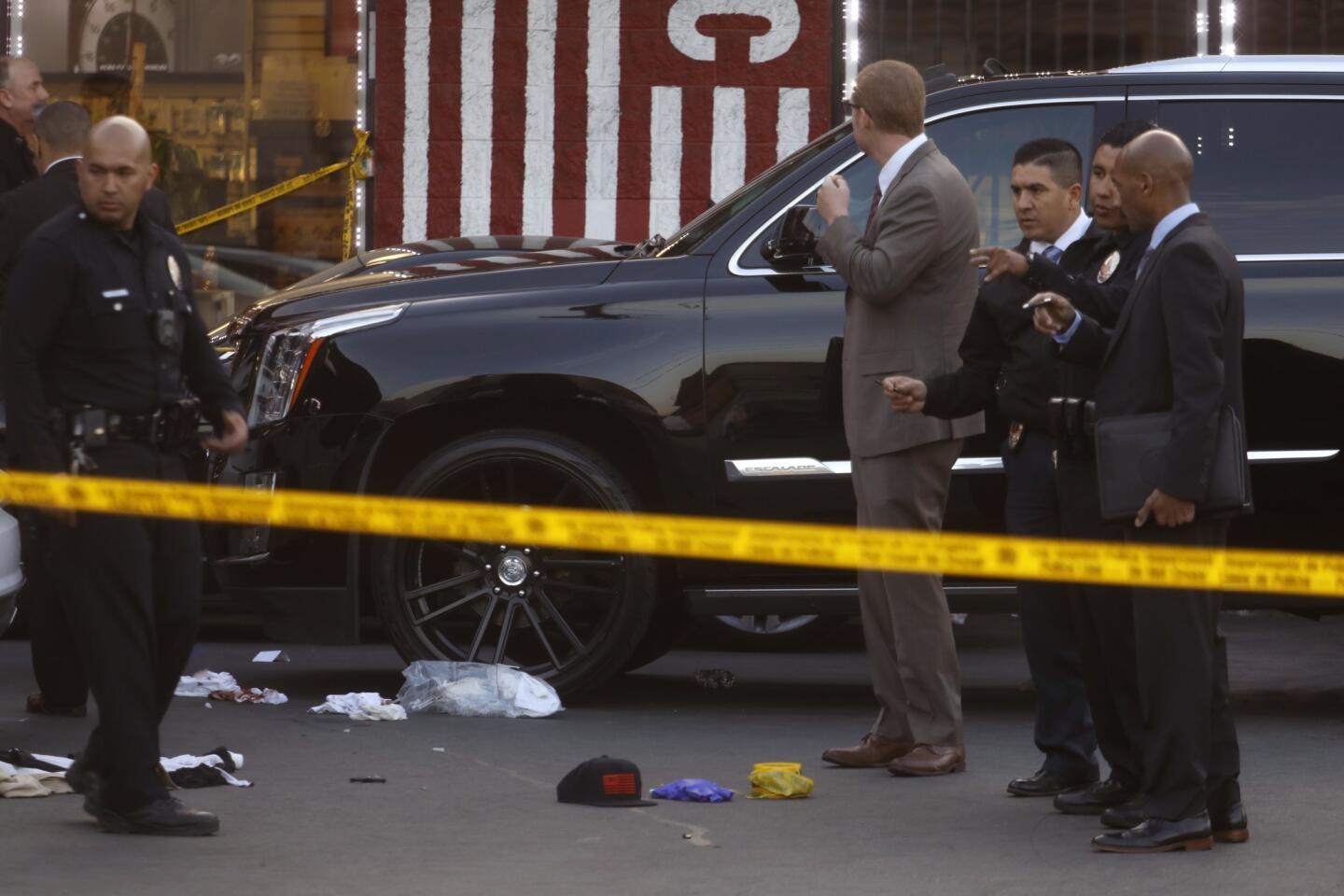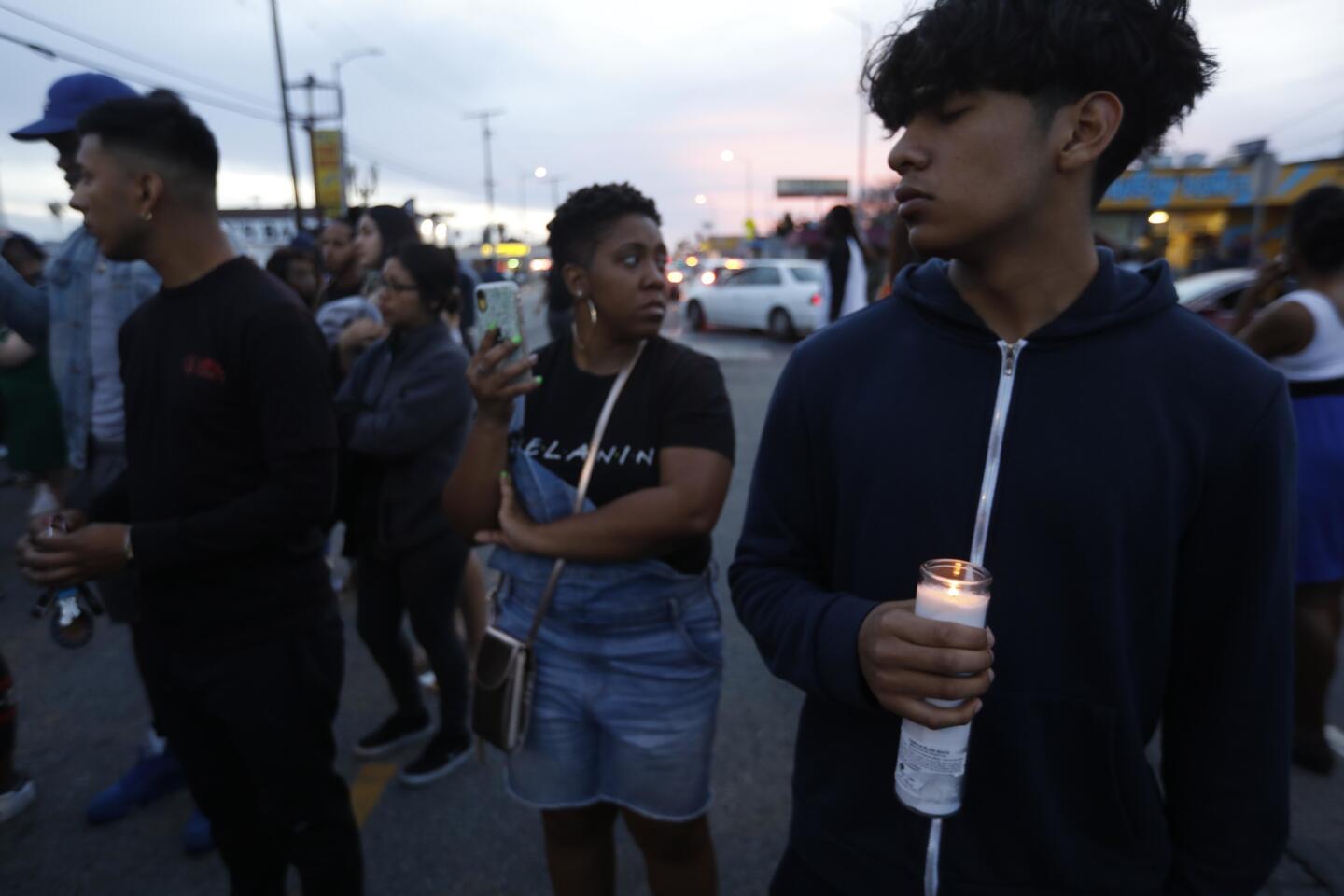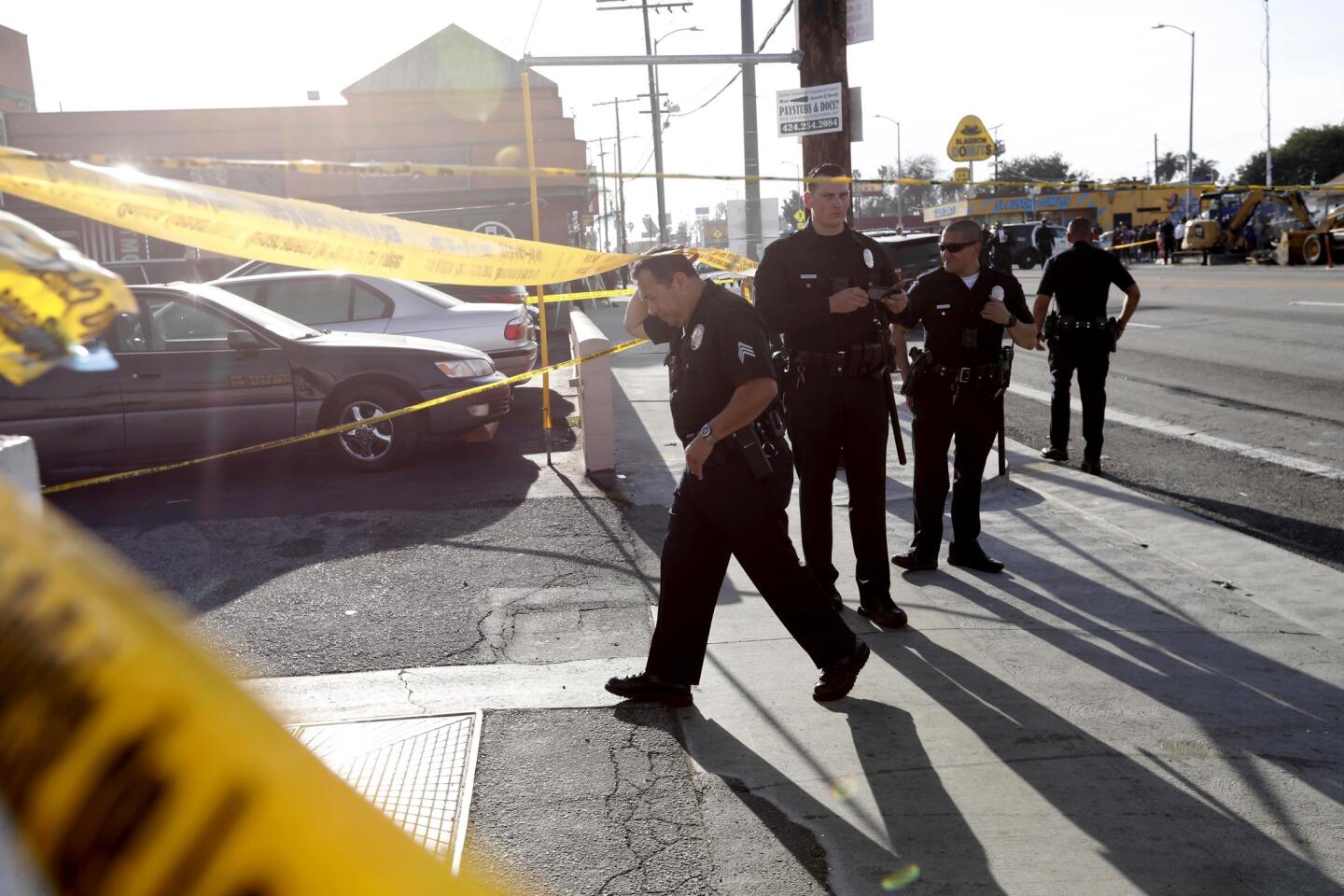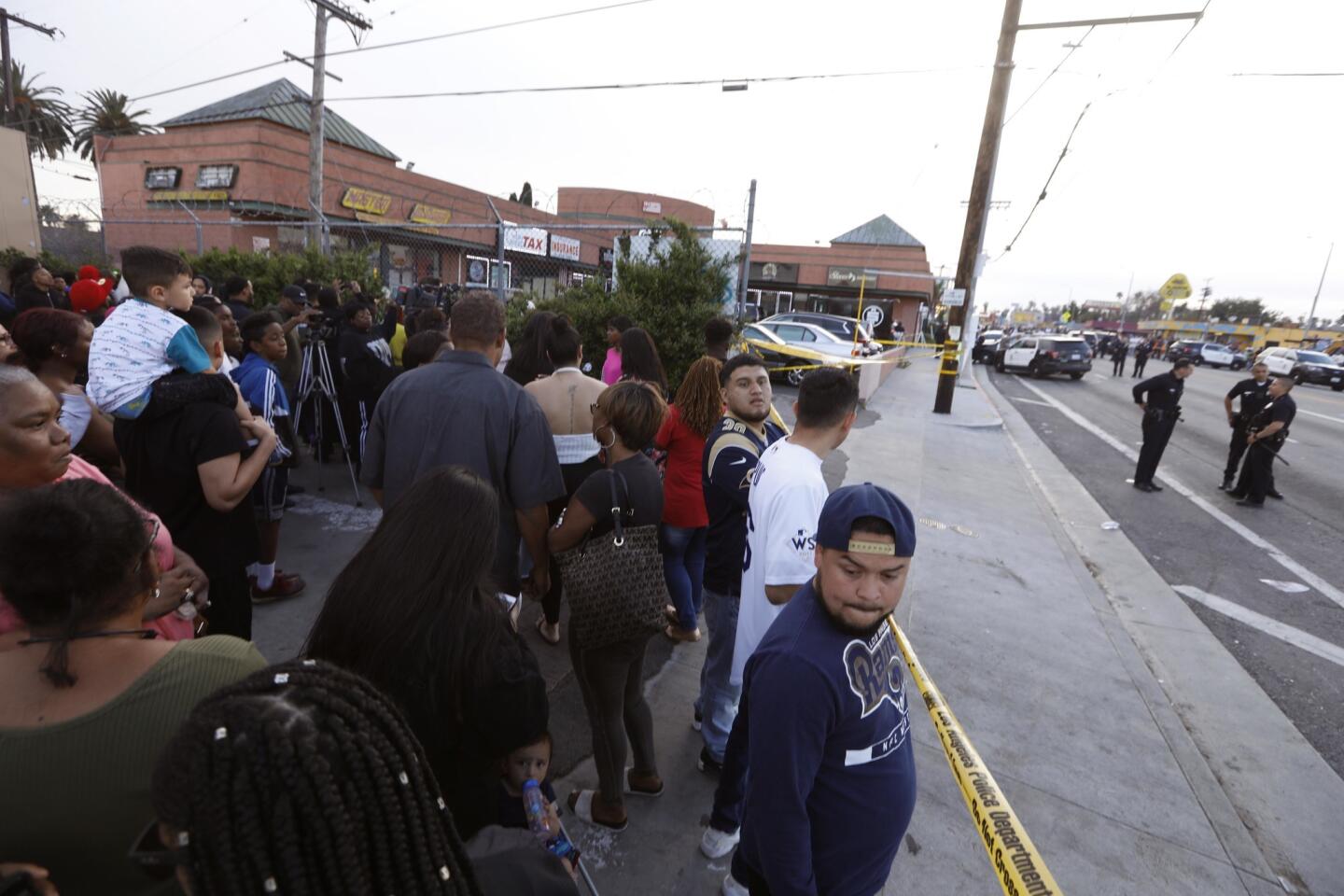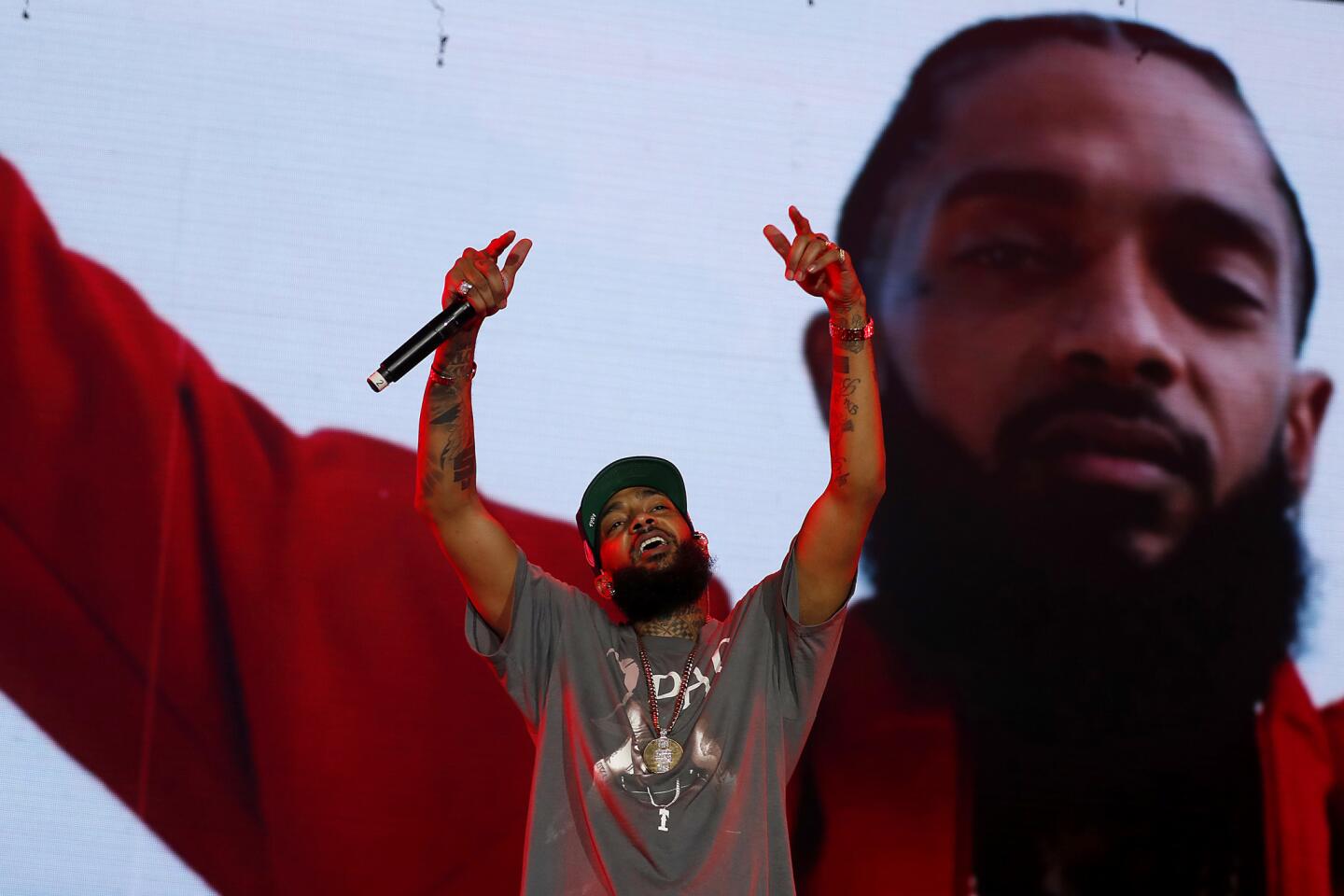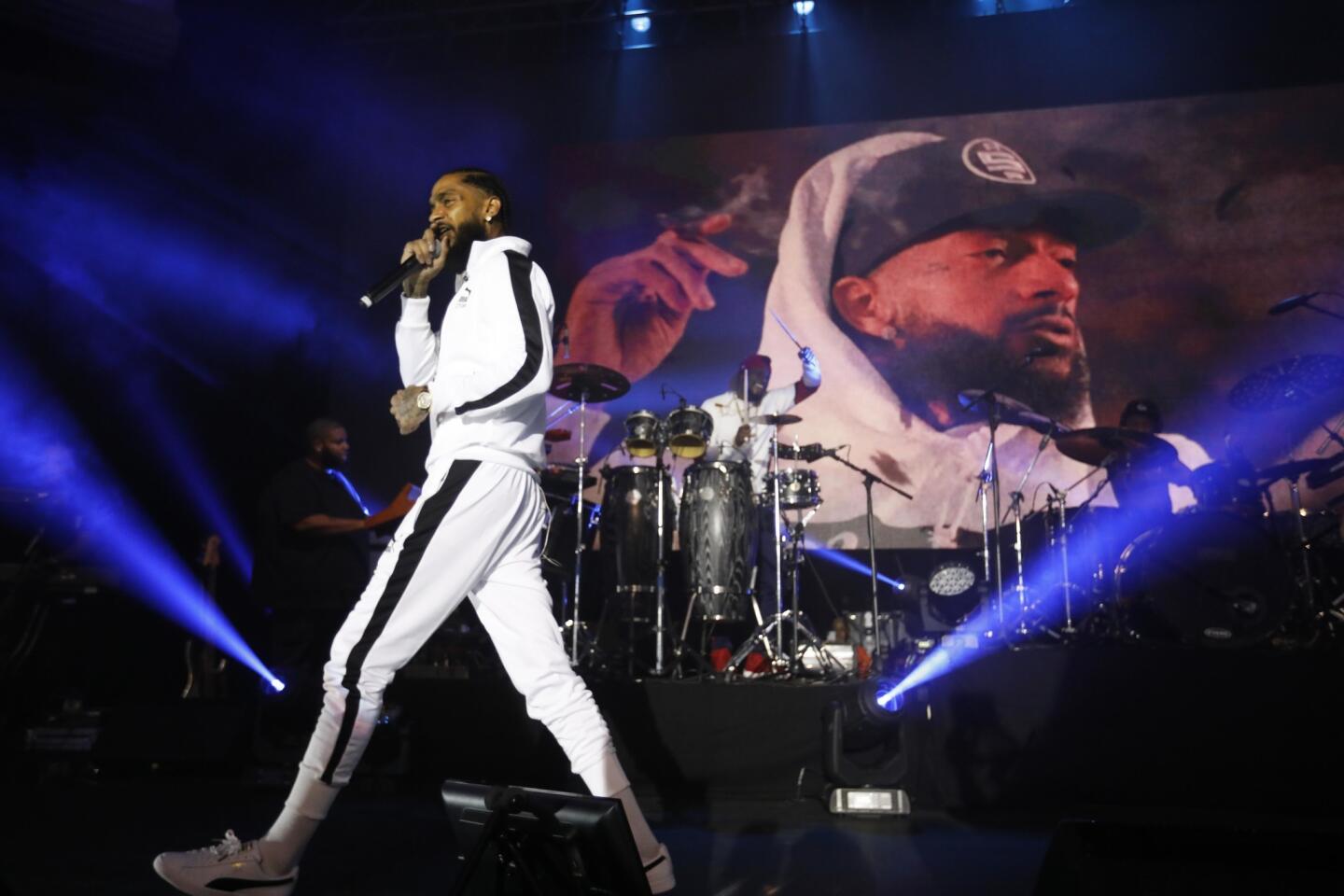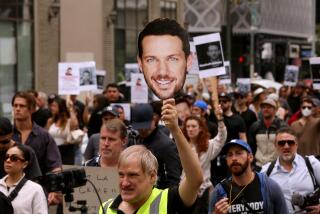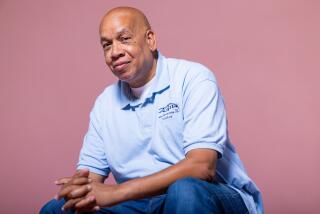Violent death of rapper Nipsey Hussle stirs anguished reflections as police hunt for suspect

Fans gather at Marathon Clothing to reflect on Nipsey Hussle’s involvement and influence in the community. Hussle was fatally shot outside his store Sunday afternoon.
The killing was like many others in this city — a young man gunned down on a street in South Los Angeles.
The questions were familiar too. Was it gang related? A personal dispute?
But because the victim was renowned rapper Nipsey Hussle, the mourning transcended family and friends and became a citywide conversation.
Hussle’s coming of age as a member of the Rollin’ 60s Crips who made it big in the music industry was on Angelenos’ minds. The conversation included broader narratives about the persistent violence in South L.A. and Hussle’s efforts to help young people harness their creativity through avenues such as the tech industry that have not traditionally been rooted in black and brown neighborhoods.
Hussle’s choice to put his money in the community he came from as the owner of many small businesses, including the clothing store where he was fatally shot Sunday, is part of what many see as his legacy. He viewed entrepreneurship as a way to find success beyond the long-shot occupations of sports and music.
But the choice to stay close to home also put him in the line of fire as a wealthy and influential person in a place where disputes among acquaintances and rivals are sometimes settled violently.
“Being quick to the gun — the resolving of problems with a gun is going to always end up bad,” said Ben “Taco” Owens, who works to prevent gang violence in South L.A.
The dichotomy was on display late Monday when several people were injured at a vigil for Hussle that turned violent when the crowd stampeded after reports of gunfire. Police said no shots were fired, but paramedics transported more than a dozen people, including two in critical condition, to the hospital. Most of the injuries were related to people being trampled.
RELATED: Several injured as Nipsey Hussle memorial ends abruptly after stampede of people »

A Los Angeles Fire Department official said at least 10 people were taken to hospitals, including two patients in critical condition, after an inaccurate report of shots being fired.
On Monday, as radio DJs devoted their programs to Hussle and online tributes continued to pour in, LAPD sources said they had identified the suspect as Eric Holder, 29, of Los Angeles, and said they are searching for him.
Holder was last seen in a white, four-door 2016 Chevy Cruze, with the California license plate number 7RJD742. The vehicle was driven by an unidentified woman, according to the LAPD.
Authorities had previously said the shooter was someone in Hussle’s orbit and they believed the motive was likely personal, not a gang feud.
According to initial reports, a young man opened fire on Hussle at close range before scrambling to a getaway car. The L.A. County coroner said Monday that Hussle, 33, whose legal name was Ermias Joseph Asghedom, died of gunshot wounds to the head and torso. He was pronounced dead at a hospital at 3:55 p.m. Two others were wounded in the shooting.
The investigation encompasses witness interviews, social media posts and security camera footage of the strip mall that houses The Marathon Clothing, the rapper’s store at the corner of Slauson Avenue and Crenshaw Boulevard, a source said.
The LAPD scheduled a press conference for Tuesday morning to provide updates.
“The saddest part of the story is that he represented a new path that gang members can create for themselves as entrepreneurs,” said Alex Alonso, a gang expert and adjunct professor at Cal State Long Beach.
RELATED: Nipsey Hussle’s dreams were bigger than hip-hop »
LAPD Chief Michel Moore put Hussle’s killing in the context of a recent uptick in violence, noting that there have been 26 shootings and 10 homicides in the city since the previous Sunday.
“That’s 36 families left picking up the pieces,” Moore tweeted. “We will work aggressively with our community to quell this senseless loss of life.”
Hussle was set to meet with Moore and Police Commission President Steve Soboroff on Monday to talk about solutions to gang violence.
“Throughout the years, as he fostered success in his music career, he chose ... to reinvest and try to address the various underpinnings that fostered this environment. It’s just terrible,” Moore said Monday.
As his music career took shape over the last decade and a half, Hussle carefully considered how he would use his platform to influence the violent culture he came from.
He sang about gang life because that was what he knew, he said in a 2009 interview on Alonso’s website, streetgangs.com. But he predicted that as his life changed, so would his themes.
He did not use his music to air his grievances because “we came from a lifetime of beefing, and I got enough enemies as it is,” he said.
Eugene “Big U” Henley, a fellow Rollin’ 60s Crip who managed Hussle in the early days, said the two men decided to test the blue-red color line that traditionally divided Crips and Bloods.
“You see Nipsey wear a lot of red,” Henley, who now runs a gang intervention nonprofit, said in an August 2018 interview with “The Breakfast Club” morning show on New York’s Power 105.1 FM. “It was the first time a Crip was able to push that red line like we was doing it.”
Hussle performed with rappers from rival gangs, including YG and Joe Moses.
Hussle noted that Moses was from the Van Ness Gangsters, a Bloods gang whose turf was nearby and which Hussle described as “one of our worst enemy ’hoods.”
“Hating [someone] just because of where he grew up and where his momma pays rent — we’re trying to get above that and move beyond that,” Hussle said in the 2009 streetgangs.com interview.
But that conciliatory spirit may have angered some of Hussle’s associates, said a law enforcement source, with some younger gang members viewing his work with Blood-affiliated rappers as unacceptable.
Hussle tweeted shortly before his death: “Having strong enemies is a blessing.”
Full coverage: Nipsey Hussle gunned down in South L.A. »
Asked in the streetgangs.com interview to explain his relationship with the Rollin’ 60s, Hussle said he was “not an active gangbanger,” which he defined as someone who would confront a stranger with “Where are you from?”
He said he was “still from my area, still representing my section,” while pursuing a career as a musician.
Owens, the South L.A. gang interventionist, said gang loyalty is complicated, and many gang members have a deep love for their neighborhoods — the bad along with the good.
“What it appears he wanted to do through his storytelling was to bring a new community to his community, something he envisioned that would make life better for his community,” Owens said of Hussle. “He was on his way there. He was practicing philanthropy at a very young age.”
In South L.A., Hussle was a role model for young people, which made his violent death especially horrifying, said Latisha Roberts, a consultant for a cafe in the Baldwin Hills Crenshaw Plaza.
“This was someone that had been around for years, since my son was a teenager, and he’s been very instrumental in my son seeing you can come from something like this and still make something of yourself,” Roberts said.
Roberts was critical of the LAPD’s initial suggestion that the shooting was connected to gang activity, calling it a stereotypical answer.
“The only people we hear saying that it’s gang-related are the news and the media outlets,” she said. “Everybody that’s in the ’hood, they know that’s not the case. Because then he would have been gone a long time ago.”
Kevin “Twin” Orange, who grew up as a member of the Hoovers gang and lost his cousin and twin brother to street violence, urged people to stop settling minor disputes with gunfire.
“We’ve got to talk about these things and find a better way to deal with them, before people resort to taking somebody’s life,” said Orange, a gang interventionist. “I hope we can uplift each other from this and celebrate his music in a healthy way.”
Times staff writers Angel Jennings, James Queally and Dakota Smith contributed to this report.
More to Read
Sign up for Essential California
The most important California stories and recommendations in your inbox every morning.
You may occasionally receive promotional content from the Los Angeles Times.
